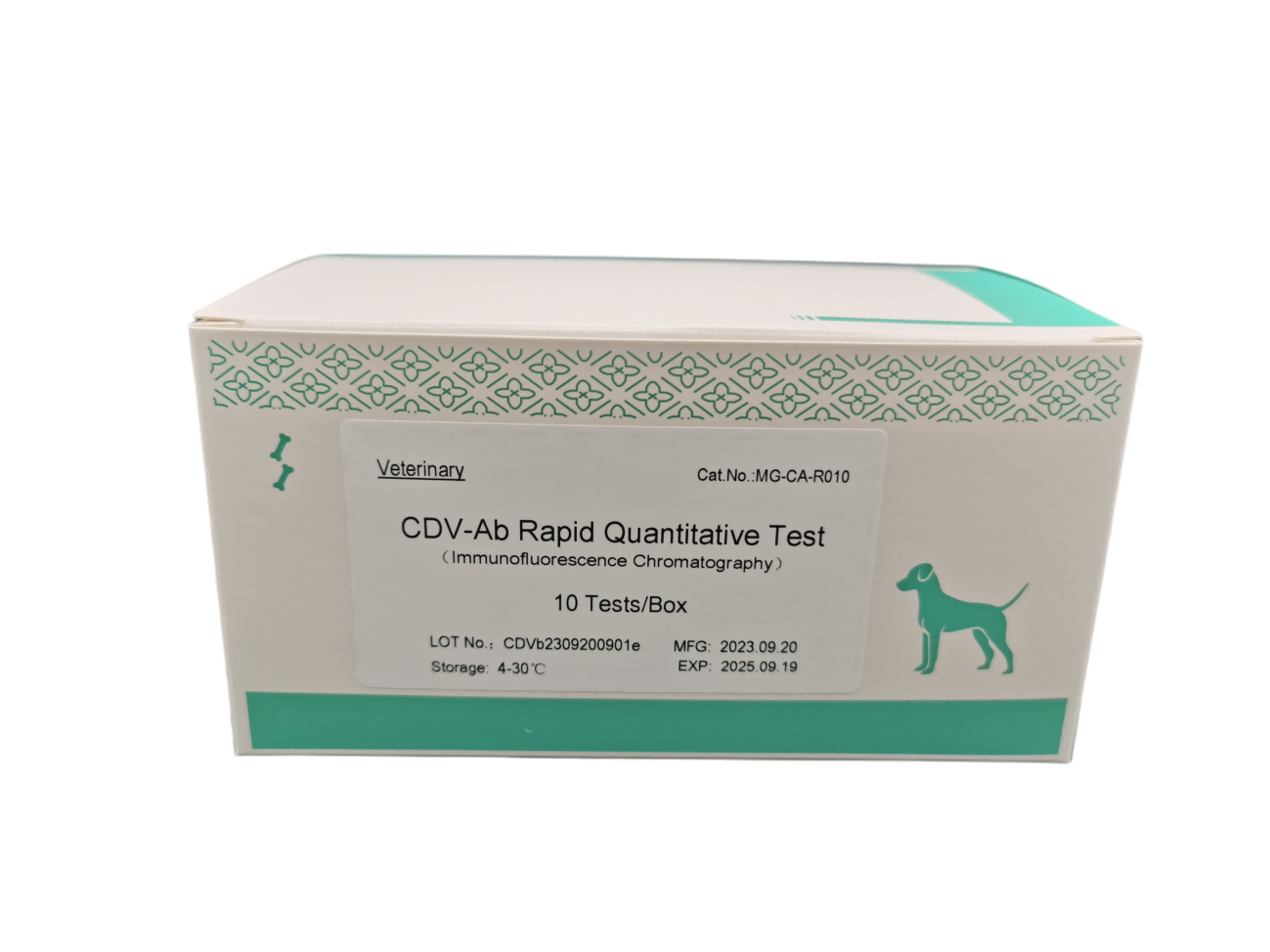


Key attributes

SPECIFICATION
Package Size: 10 Tests/Box
Catalog Number: MG-CA-R024
The cLSH-Ab test is a fluorescence immunoassay intended for use with an Immunofluorescence Analyzer. It quantitatively determines the concentration of leishmania antibodies in serum or plasma specimens, aiding in the diagnosis and monitoring of canine leishmania infection.
For in vitro diagnostic use only. Professional use only.
This test utilizes a quantitative double-antigen sandwich fluorescence immunoassay technique. The intensity of the fluorescent signal reflects the amount of cLSH-Ab captured, with results expressed in Tu/ml.
| Contents | Quantity |
|---|---|
| Individual Sealed Pouches | 10 |
| - Test Device | Per pouch |
| - Desiccant Pouch | Per pouch |
| ID Chip | 1 |
| Instructions for Use | 1 |
| cLSH-Ab Sample Buffer Tubes | 10 |
| Pipette Tips | 10 |
Materials Required but Not Provided:
Immunofluorescence Analyzer
Timer
Pipette
Centrifuge
Store the kit at 4–30℃ up to the expiration date.
Operate the test between 18–28℃ after opening the pouch.
Perform the test within 30 minutes of opening the pouch.
The test can be performed using serum or plasma (EDTA anticoagulant recommended).
Separate serum or plasma within 3 hours of blood collection. Avoid using severely hemolyzed specimens.
Test immediately after collection. If testing is delayed, store specimens at 2–8℃ for up to 72 hours, or below -20℃ for long-term storage.
Bring specimens to room temperature before testing. Avoid repeated freezing and thawing. Use only clear, non-hemolyzed specimens.
Refer to the Immunofluorescence Analyzer Operation Manual for complete instructions.
Place the Test Device on a clean, level surface.
Insert the ID Chip into the analyzer, and ensure the Test Device lot number matches the ID Chip number.
Add 50 μl of the prepared sample to the cLSH-Ab Sample Buffer and mix gently.
Transfer 100 μl of the mixture to the sample well (S) of the test device. Avoid bubbles.
Select the Test Mode:
Standard Test: Insert the test device into the analyzer immediately, select "Serum/Plasma," and start the test. Results will be displayed automatically.
Quick Test: Let the test device sit at room temperature for 10 minutes, then insert it into the analyzer and start the test. Results will be displayed automatically.
Results can be displayed on-screen and printed automatically or manually.
Each cLSH-Ab Rapid Quantitative Test contains an internal control for quality assurance. If an invalid result is detected by the internal control, the analyzer will display an error message, indicating that the test should be repeated.
Detection Range: 3.0 ~ 320 Tu/ml
Reference Ranges:
| Result (Tu/ml) | Suggestion |
|---|---|
| ≤ 6 | Negative (-) |
| 6 – 12 | Suspected (±) |
| 12 – 25 | Weak Positive (+) |
| 25 – 100 | Medium Positive (++) |
| > 100 | Strong Positive (+++) |
Note: Each laboratory should establish its own reference range based on the population being tested.
For in vitro diagnostic use only.
Check the packaging for damage before use. Do not use damaged or expired test devices.
Use a new pipette tip for each specimen.
Factors such as technical errors or unknown substances in blood specimens may interfere with the accuracy of the test results.
